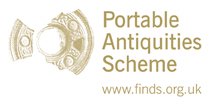Server check!
You are on the training database
Saw blades
Example = http://www.britishmuseum.org/research/search_the_collection_database/search_object_details.aspx?objectid=814388&partid=1&searchText=saw+bronze+age&numpages=10&orig=%2fresearch%2fsearch_the_collection_database.aspx¤tPage=1
Date = 1400 -750 BC
Distribution = Britain
Saw blades are very rare finds and would have been used in woodworking mainly for fine work. Saws in Bronze Age hoards are usually long and rectangular, often perforated at one end, with teeth on one edge only. The teeth were sometimes filed, but never set. O'Connor (1980: 177) notes that the saws were probably used for fine work, for "without set teeth, they could not have been very efficient." They were used on both sides of the Channel, and one example from France was of a dagger blade reused as a saw (from the Porcieu-Amblagnieu hoard, Isère). Rowlands (1976: 46) makes the point that "It is important to emphasise however that the bronze saw was a likely component of the MBA smith's tool range." Saw blades appear in the archaeological record in what is known as the Taunton Phase which began around 1400 BC. They generally have rivet holes at each end of the blade so that handles of some sort of organic material could be attached.
References
- O'Connor, B. (1980) Cross Channel Relations in the Later Bronze Age. Oxford: British Archaeological Reports S91
- Pearce, S. (1984) Bronze Age Metalwork in Southern Britain. Aylesbury: Shire Publications.
- Rowlands, M.J. 1976 'The Production and Distribution of Metalwork in the Middle Bronze Age in Southern Britain: Part ii'. Oxford: British Archaeological Reports.


